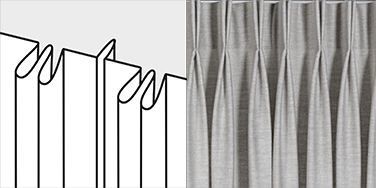Confection
De Ploeg’s curtain fabrics can be used in multiple ways in your interior, for example as pleated curtains but also as folding curtains. To show what the possibilities are and how a fabric looks in a particular confection, here is an overview.

Wave pleat
A sophisticated system of runners, curtain tape and curtain hooks provides the basis for a sleek curtain. By using “waveband” the curtain falls smoothly into the pleat and a so-called wave effect is created where the curtain runs under the rail. The way the curtain then falls is similar to confection on runners. The runners are connected with a cord of 8 cm, this creates a nice regular pleat in the curtain.
The fixed distance between the runners and the fixed distance between the hooks in the curtain creates a wave motion that repeats itself almost exactly.
Fabric requirement 180% – 240%

Rings
Curtains can also be fitted with grommets in various sizes and colors. This method of manufacturing is particularly suitable for the more rigid fabrics. It is also possible to make curtains with pleats on rings. The hook goes through an eyelet on the rings. The head may only be 1 centimeter high and covers only the suspension ring. The rings and rod remain completely visible.
Rings, available in various colors and sizes, are punched in at the top to allow the curtain to slide over a rod.
Fabric requirement 200% – 260%

Roman blinds
The Roman blinds program consists of several models with inserted ribs on the front or back. The Roman blinds can be made either lined or unlined.
De Ploeg has selected a number of cloth qualities which are suitable for use as Roman blinds. These qualities have been thoroughly tested in advance to determine whether they are suitable for Roman blinds.
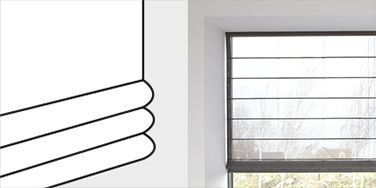
Single pleat
The single pleat can be used with any type of fabric. the curtain hangs in front or below the rail. In the picture, the single pleat is made up under the rail.
Fabric requirement 150% – 200%
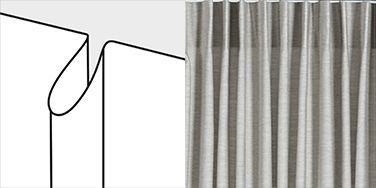
Single pleat with return pleat
The single return pleat can be used with any type of fabric. Between the pleats on the front, a pleat is stitched on the back so that the pleats stay in shape more nicely. The curtain hangs below the rail.
Fabric requirement 170% – 220%
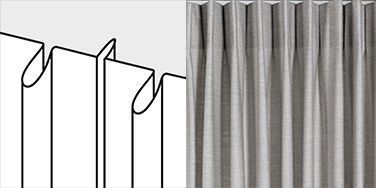
Double pleat
The double pleat can be used with any type of fabric. The curtain hangs in front of or below the rail. This pleat hangs fuller than the single pleat.
Fabric requirement 200% – 260%
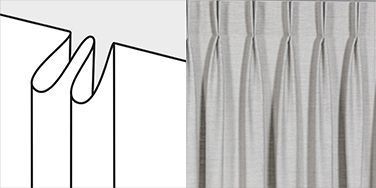
Double pleat with return pleat
This pleat hangs fuller than the single pleat. Between the front double pleats, a back pleat is stitched to keep the pleats hanging nicely. The curtain hangs under the rail.
Fabric requirement 220% – 280%
